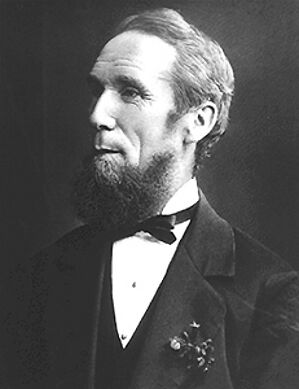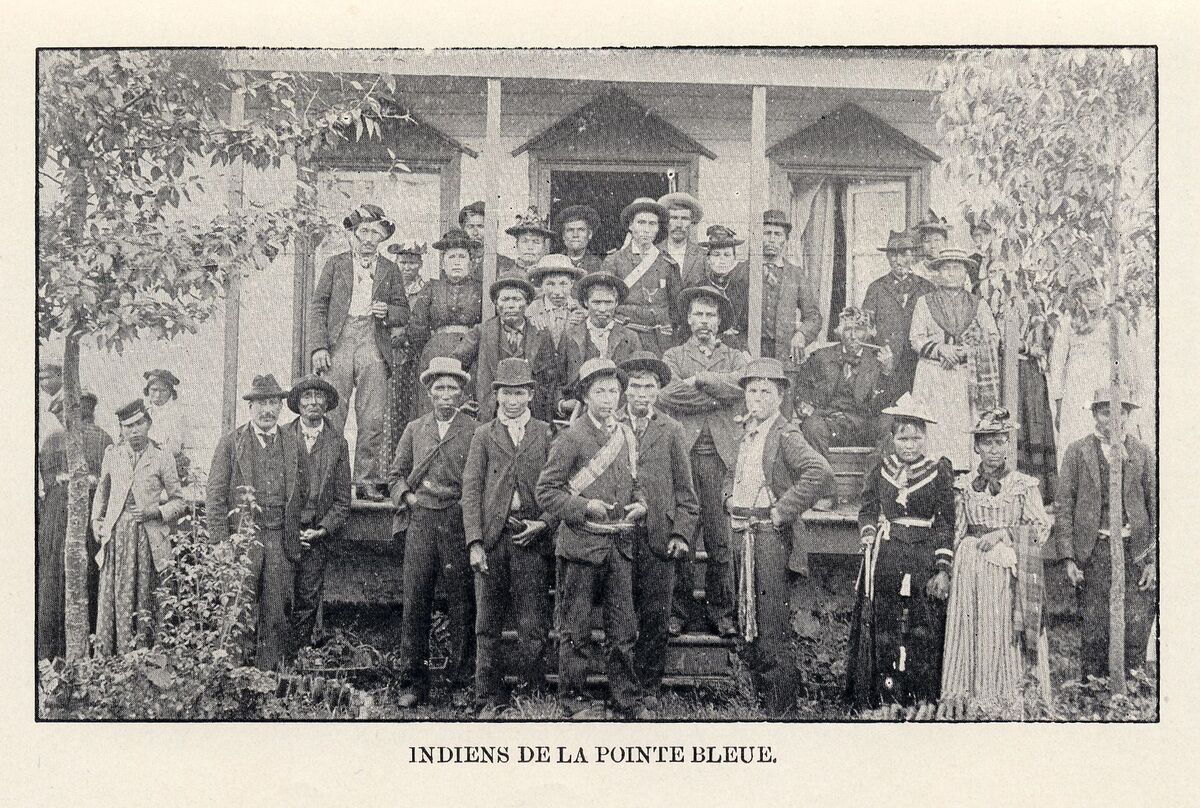To better control the Indigenous population, the Canadian government, with Alexander Mackenzie at the helm, adopted the Indian Act in 1876. This law applied to members of First Nations, but not the Métis or the Inuit. The purpose of the Indian Act was to force Indigenous peoples into Canadian society by assimilating them. Under this law, “Registered Indians” (Indigenous peoples) were considered minors, meaning they were not recognized as adults. This meant that they did not have the same rights as Canadian men and women. The government managed many of their affairs, including their land. They were made dependent on the Canadian government. The government used this dependency to control and assimilate the First Nations peoples.

Source: Alexander Mackenzie [Photograph], before 1892, Wikimedia commons, (URL). CC0 1.0.
-
Forced Assimilation means a dominant group seeks to integrate a minority (a group with less power) into its population by eliminating what makes them distinct (culture).
-
Registered Indian was a legal term used to identify members of the First Nations who were registered as Indians on the official registry by virtue of the Indian Act.
The government wanted Indigenous communities to abandon their culture to become Anglophone Protestants or Francophone Catholics, depending on where they lived. The government went about achieving this in a variety of ways. For example, the children of Indigenous peoples were sent to residential schools designed to assimilate them into Canadian society.
The Indian Act has been amended several times over the years, and it is still in application in Canada today.

The purpose of the Indian Act was to assimilate Indigenous peoples, making them more like Canadians.
Source: Indiens de la Pointe-Bleue [Photograph], Buies, A., 1896, BAnQ, (URL).
As colonization advanced in the 19th century, colonists increasingly encroached on the lands where Indigenous peoples lived. As a result, native communities found it hard to meet their needs: their hunting grounds grew progressively smaller as colonists settled the area. To support colonization and to gain control over the land, the government gave small clearly-defined areas to Indigenous communities in the 1870s. These lands were called “reserves.” From then on, Indigenous peoples no longer had access to the vast territories that they had previously occupied.
In exchange for taking their land, the federal government gave them money and services through the reserves. However, the services offered were sometimes insufficient, creating severe problems in some reserves, such as safe access to drinking water. Among other things, Indigenous peoples had hunting and fishing rights on the reserves, but the land belonged to the federal government and the communities had no autonomy.
The government created the reserves so that the different groups of Indigenous peoples would settle in one place and be forced to adopt agriculture as a means of subsistence. The government believed that this would make it easier to assimilate the First Nations peoples into Canadian society.
As of 2021, the Canadian government is still “responsible” for the Indigenous peoples of Canada. The government is in charge of ensuring that communities have access to proper services. However, much of the infrastructure that carries drinking water to the reserves is defective. This means that many people living in reserves all over the country do not have access to safe drinking water or have trouble maintaining the infrastructure due to a lack of resources. This is a problem that has major negative impacts on communities.
To find out more about this topic, see the following articles:
This map shows the different Indigenous nations currently in Quebec. They include the Inuit nation, which, as mentioned earlier, is not subject to the Indian Act.

Alexander Mackenzie [Photograph]. (before 1892). Wikimedia commons. https://commons.wikimedia.org/wiki/File:Alexander_Mackenzie-portrait.jpg
Buies, A. (1896). Indiens de la Pointe-Bleue [Photograph].BAnQ. https://numerique.banq.qc.ca/patrimoine/details/52327/1957342